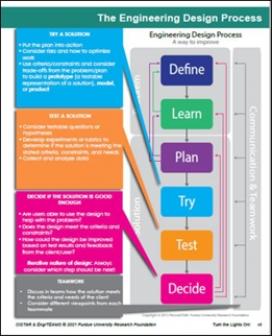Nine-Session Unit Exposes Middle School Students to Complete Engineering-Design Process
Incorporating a design challenge, a nine-session unit teaches eighth-grade students mathematical and scientific concepts related to electrical energy and renewable resources in lessons developed at the Center for Innovative and Strategic Transformation of Alkane Resources (CISTAR), an NSF-funded Engineering Research Center (ERC) based at Purdue University.
The lessons expose students to the complete engineering-design process, including problem scoping, solution generation, redesign, and communicating the final design to a client. Students learn about maintaining an engineering design notebook, teamwork, communication, data analysis, and iteration.
Videos explaining the curricula and step-by-step instructions for implementation are available on the nanoHUB website and on Teachers Pay Teachers. Also, curriculum kits with the required materials for implementing the activities can be checked out.



